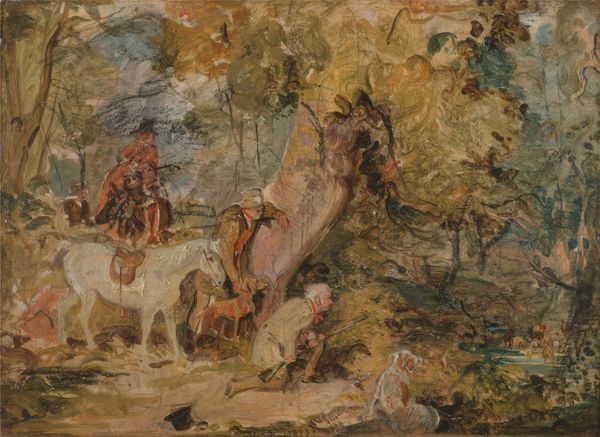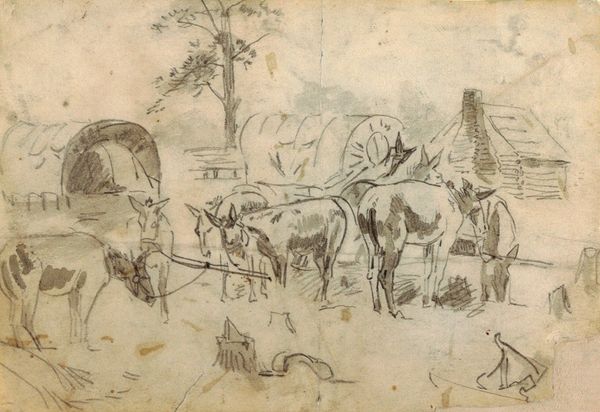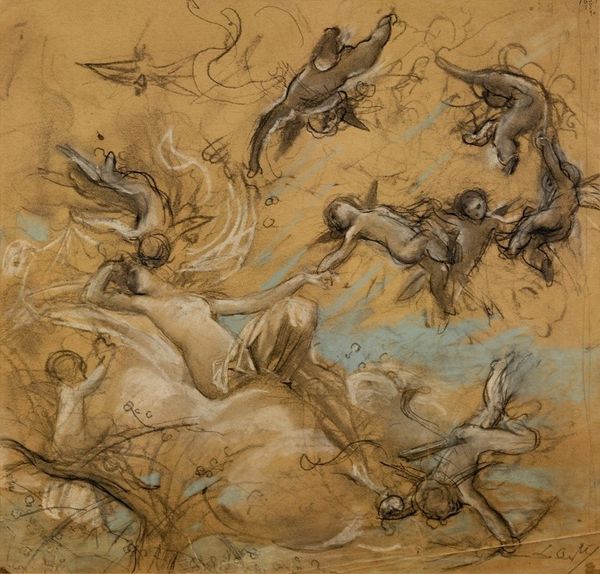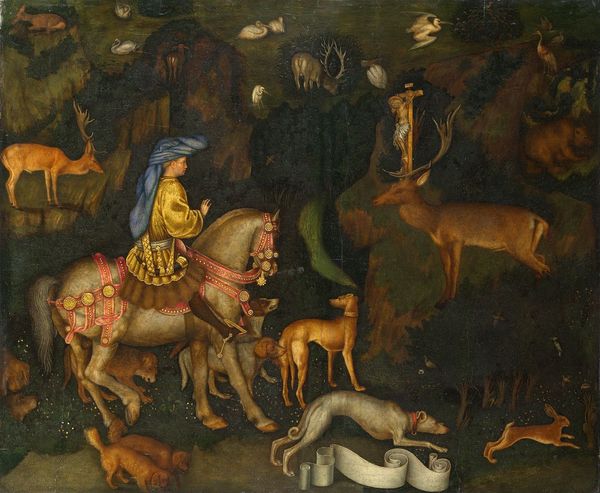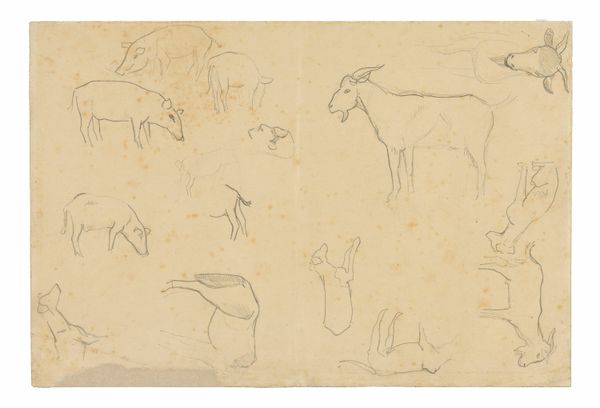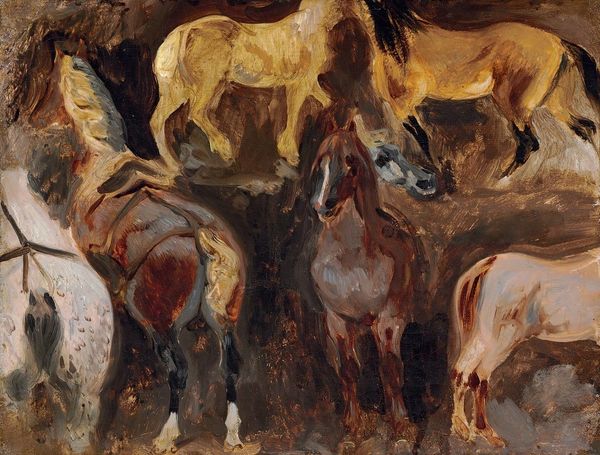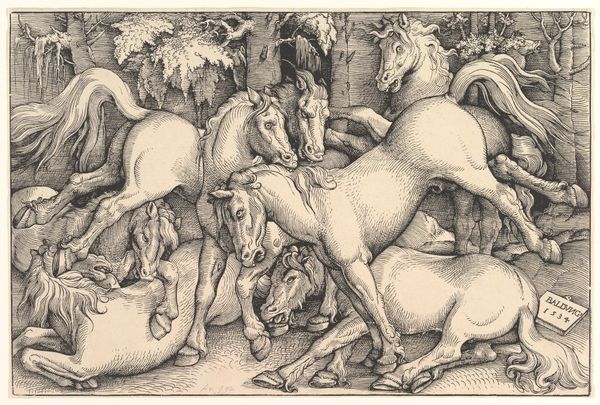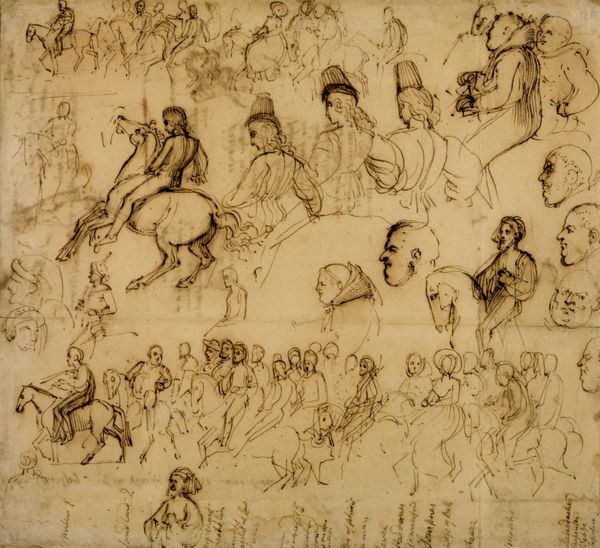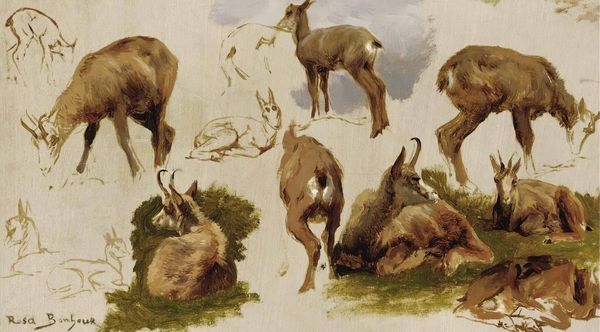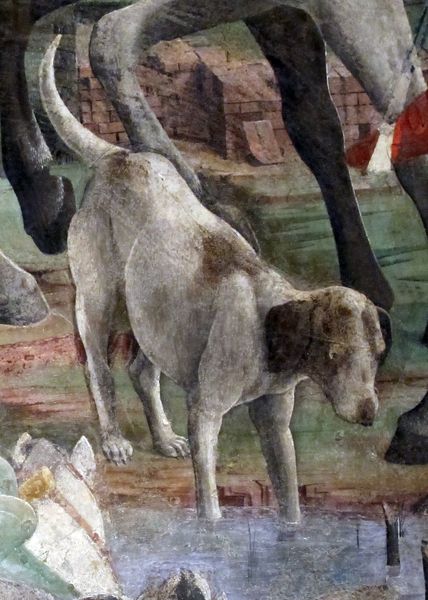
Studies of animals (donkeys, cats and monkeys) 1616
0:00
0:00
drawing, painting, oil-paint, paper, ink, pencil
#
drawing
#
baroque
#
animal
#
painting
#
oil-paint
#
charcoal drawing
#
paper
#
oil painting
#
ink
#
pencil
#
flemish
Copyright: Public domain
Curator: Looking at this fascinating oil-on-paper work titled "Studies of Animals (Donkeys, Cats, and Monkeys)" by Jan Brueghel the Elder, dating back to 1616 and held at the Kunsthistorisches Museum in Vienna, I’m struck by how the artist has captured the essence of these creatures. Editor: It certainly has a chaotic energy. It feels like rifling through an old naturalist's notebook – sketches layered on top of each other with this raw, unrefined presentation. The materials used; oil on paper give the piece this unusual texture. What do you make of the composition? Curator: The layering feels deliberate, hinting at symbolic overlaps and the interconnectedness of these creatures in the natural world and potentially human society as well. Brueghel, a master of detail, weaves threads between the perceived 'dumbness' of the donkey, the cunning of the monkey, and the independence of the cat, each possessing characteristics projected onto them. Editor: Interesting take. I see it as perhaps more utilitarian than symbolic, possibly even didactic. Oil sketches like these were very often preparatory works, studies of form, texture, and composition intended for use in larger, more polished works on panel or canvas. Curator: Perhaps. Though knowing Brueghel's fascination with allegory, and the period's fascination with moralising narratives even through the animal world, I hesitate to dismiss symbolic intentions outright. For instance, cats often symbolized independence and even slyness, monkeys mimicked human follies, and donkeys humility or even obstinacy depending on the viewer. The collective presence here… Editor: Well, collective production seems just as significant. The availability and cost of materials, the training needed to master this style… It’s a peek behind the curtain of a painter's studio, almost like observing the building blocks, literally the oil paints and paper substrate through which more idealized, didactic statements are constructed. This provides important clues for considering its role in early-17th century artisanal labor and material conditions. Curator: True. There's a tension then. The 'realness' conveyed through the medium versus the potential for highly symbolic representation through careful arrangement of these studies. It brings into sharper relief the animal roles then available for exploitation in human stories, in fables…or in more complete artistic works. Editor: Indeed, the convergence between animal, material and market forces, isn't it? Ultimately, for me, this “unfinishedness” allows for a kind of historical and art-historical honesty that often feels glossed over. Curator: A glimpse beyond surfaces, through intentions... I am glad we could peel away a few layers here today, thank you.
Comments
No comments
Be the first to comment and join the conversation on the ultimate creative platform.
